First off, this would have been my mother-in-law’s 89th birthday–I called her “Gram.” One of the nicest ladies you’d ever want to meet… she passed away 4 years ago. Happy Birthday Gram! This shoot is dedicated to you.
A beautiful Thursday morning as I pull into the visitor’s center area of the Ridgefield National Wildlife Refuge. I notice some small patches of fog hugging the ground and mostly clear skies. I get my gear set up and I’m ready to roll, around the 4.2 mile auto tour by 8:00 a.m., just after true sun up.
During gear set up, I make sure I have my camera AV mode settings initially set to ISO400, f6.3, my AF point set to center only, AI Servo, and high speed burst. These are my base settings for shooting without flash. They, of course, change depending on the situation. I also make sure my camera mode settings for M (manual) are set: 1/250 shutter speed, ISO400, f7.1, and that my Canon 580EX flash is set to -2/3 flash compensation, and zoomed in to 105mm (to waste the least amount of light possible). I shoot a practice frame to be sure all is working correctly. I always shoot in M mode when using the flash. I’ve gotten used to switching back and forth from M to AV mode depending on my lighting needs. Again, lighting and other circumstances will determine if I need to adjust flash comp., aperture settings, or ISO, or AF point selection/style in the field.
I take off around the tour and it’s pretty quiet. I round the curve by the Ducks Unlimited sign and drive on a few hundred yards and notice that two new boulders have been installed across from the Kiwa Trail entrance with plaques attached to them. Here’s what the first plaque says:
The second plaque lists some names of people and I have to admit, I did not look at it up close or get a shot. Stop by and take a look if you haven’t already seen these new plaques. It’s great to see that the refuge is working with Ducks Unlimited in partnership to create better habitat for our feathered friends.
Just past post #10, I approach the small area of cattails and teasel to the left of the road and get this shot of an early morning Song Sparrow.
[Reminder: please view the photos in large view by clicking on these thumbnails. Thanks!]
As I head down the road between posts #12 & 13, I notice many Western Meadowlarks on the road and on the surrounding grass. Up ahead I could see them landing on teasels and I was hoping they might stay there if I pulled up slowly but they did not want any part of it. I did get some shots of one on the road but the light was such that it is not worth posting.
I look down the road toward the three trees and see a flock of Canada/Cackling Geese on the ground, covering the road in front of me. Picking up my binoculars, I take a look and see a small group of Sandhill Cranes behind the geese, not very far off the road, feeding in the grass. Here is the scene I am looking at.
What a sight and sound when all these geese take off at once right over you. It’s also a good idea to be in a covered area or vehicle when they do fly over! 🙂
I’m noticing as the weeks go by that it seems the cranes are becoming slightly braver as they are feeding quite close to the roadway now. I estimate they let me approach in my truck to within about 100 feet before taking flight. I still would love to get a decent shot of a crane on the ground! Here’s the best I got today, such that it is!
That about does it for my first loop around–not super-productive but fun nonetheless. I did notice an anomaly today–there are miniscule spider webs hanging all over the mirrors and antenna of my truck as well as these tiny spiders setting up shop in my open windows of the truck. They are also invading my camera and lens! I’ve seen this before but not nearly to this degree. I also had a run-in with a yellow jacket which came into my cab a couple times, and landed on my camera and lens. Everytime I shooed him away, he came right back. I finally got rid of him but he sure liked my new 7D for some reason!
On my 2nd time around I got a flight shot of a gull flying over near post #11. Here’s the shot!
I’m still practicing on anything that flies! I even resorted to trying to take a shot of a yellow leaf falling to the ground at one point (which can be beautiful if done right!), but no luck.
After the lone gull went by, a group of Pintails followed resulting in this image.
Followed by a pair of Sandhill Cranes.
This concluded my 2nd loop around the refuge. I am getting that BIF practice I so desperately need!
I’d like to mention that having a pair of binoculars along comes in handy sometimes. Mine aren’t expensive ones but are a little stronger than my 400mm lens. I use them mainly when I spot a bird in the distance and I want to ID the bird so I know whether to approach very cautiously (if it’s a rare bird) or whether I don’t really care if I flush it when I approach (it’s a bird I already have 50 pictures of). So, pick up a pair of binoculars sometime for the refuge. Some of you local readers may know a refuge volunteer named Al Larrabee. He always (jokingly) tells me I can’t enter the refuge without a pair of binoculars. I show him I have them each time I see him! 🙂
During my 3rd loop, I’m just entering the Ash tree forest and off to the right in the water I spot a beautiful, female Hooded Merganser standing out of the water on a flat board of some kind. [I wondered if this could be a male Eclipse version since its bill is not yellow. But the eye is also not bright yellow, which the male Eclipse is supposed to retain]. She was facing forward, parallel to my truck, so I had a perfect profile shot of her, although I did have to stop in a very specific spot to see her unobstructed through the brush on the side of the road. I take a lot of frames of her standing there preening and it hit me–why is this duck not flying away? She’s only about 25 feet away–why is she not spooked?
Then, a car approaches me from behind and the road is too narrow to pass me, so I start up the truck and pull forward a little ways so the guy behind me can pass. The guy asks me if I have seen any otters and I tell him yes, way back at the beginning of the tour in the slough to the right (I didn’t shoot them as it was too dark at that time). He drives on and I back up to the point where I was earlier and the merganser is still there in the same spot–hasn’t moved a bit. So, the bird again lets me pull up without even flinching. When I had taken enough frames I continued the loop but wondered why that shot was so easy?? Here’s a shot of this awesome bird.
Now…when I got home I discovered the bad news. Displaying some of the merganser frames on my monitor, there are some that show a massive injury to this poor bird on its neck area. The injury was on its right side and I could not see it from the road until the bird got into some contorted preening positions, and even then I didn’t see it through the viewfinder. It’s possible the wing could also be injured and that is why it was not flying away from me.
Now I have been around long enough to know that this injury was most likely not caused by a predator because the duck would have been lunch to an eagle or a hawk. The most likely cause of this injury was a hunter’s buckshot. The hunters were out in force today and it sounded like a war was going on. Earlier today I noticed a group of Egrets in a field and they would jump/startle every time the guns would go off.
I have seen this kind of thing before at the refuge. A year or two ago, I was driving the loop and noticed a duck in the road in front of me. As I slowly approached, it appeared to be dead, but then somehow it got the strength up to drag itself off the road and into the grass for protection. I am not against hunting or hunters, in general, although I would never do it myself. But when wildlife gets injured by a hunter’s weapon (or by any means) and is left to die a slow, agonizing death–I draw the line. This is cruelty at its worst.
I am going to display a shot of this merganser’s injury. If you don’t want to enlarge the shot I completely understand. Feel free to pass it up. The image has not been processed/sharpened.
I see my next bird just past post #9, around the corner and off to the right. This is a favorite perch for hawks and eagles though it is quite a ways off. It’s the same perch used by the Bald Eagle in my “Bald Eagle with Geese” shot posted in the Raptor gallery. I pull to my favorite spot on the road to see the perch clearly from the passenger side window. There’s an immature Bald Eagle perched there with his/her back toward me. I take some frames and here are a couple.
This eagle is a good hundred feet away and way up high. I’d guess it is a female due to its large size.
I move on a short distance (still in the woods) and come across a Great Blue Heron on the left side of the road. While I’ve seen lots of GBH’s along the water’s edge to the right and also many of them on the road that runs through fields and open marsh areas, I believe this is my first sighting on the road in the middle of the Ash forest. I could have backed up a little and gotten the whole bird in the frame but I decided to just take it from where I was. Here’s the shot.
I saw a lot of perched hawks but not in places where I could get a very nice image, so I’m not posting these today. I did spot a Red-tailed Hawk in the tree off to the left, way out in the marsh, just prior to post #11. This is a favorite spot for raptors. It’s also a good spot for light since the sun shines from right to left in the earlier part of the day. I stop here and wait a few minutes to see what the hawk is going to do. He takes off almost right at me but a little to my left and I take some frames. This is the best one although it could have been in better focus.
I drive around the corner at post #11 and a little ways down the road off to the right is a Song Sparrow perched on a cattail. I love sparrows even if they are just “little brown jobs,” (LBJ’s), so I take his picture, which is shown below.
On past post #12 and heading for the three trees, but there is a gorgeous blue heron standing on the berm/dike off to my left. The berm raises him up so my background will be clear and colorful at the same time, not to mention the grass he is standing in is lush green. I turn the camera vertically and shoot some frames. [The battery grip comes in real handy for these vertical shots.] We see these birds a lot at the refuge but they never cease to amaze me with their stately posture and wonderful colorings.
While in the three-tree area there’s a harrier doing its usual low flying work, looking and listening for anything on the ground that moves. Here, she gives me a decent opportunity with some fairly good light.
These birds are so agile! They can “stop” in mid air and turn on a dime with lightning speed. What a joy to watch!
That concludes the 3rd loop, so I start on my 4th and final loop of the day, stopping at the observation blind parking lot. I exit my truck and take my camera down the trail toward the blind and notice a marker by a bench there. The tree planted in memory of this person 10 years ago has the protective netting around it and is about 6 to 8 feet tall now. It’s trunk is still less than an inch in diameter so it will be a while before it becomes a full fledged tree. I tried finding some information on Billie Agard but was unsuccessful.
I get back in the truck and find one of the prettiest wrens a ways down the road, a Bewick’s.
I continue on to one of my favorite spots for BIF’s, just short of post #11. This is the same spot I shot the hawk flight shot, pintails, and cranes, posted above. Here comes a lone Great Egret winging its way, at a great angle to where I’m sitting, making it fairly easy to shoot out the truck window.
I arrive at the ‘home stretch’, a few hundred yards before the visitor’s center and see a pair of harriers frollicking in the air. It reminded me of the behavior of Bald Eagle pairs in flight. Here are some shots of a single bird.
Here are shots with both birds in the frame.
Wing tip to wing tip!
That brings this shooting day to an end! I had a great time putting this week’s blog entry together although I have to say that seeing the poor injured merganser brought some sadness to this writer. Maybe by some miracle the bird will heal and will make it. Maybe it is able to fly but just didn’t feel like it at the time I was there. We can always hope!
Thank you for taking the time to visit and we’ll see you next time!
Dennis

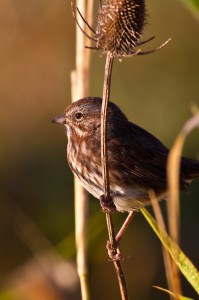
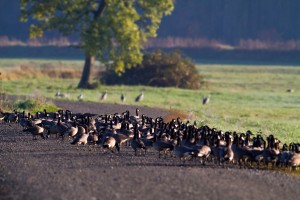
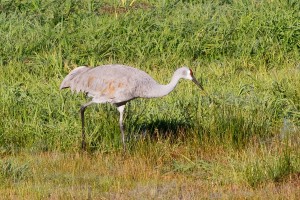
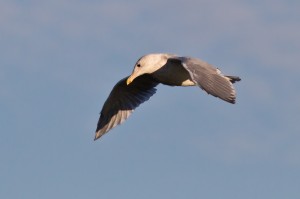
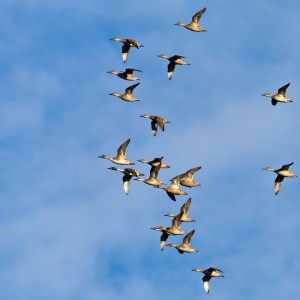


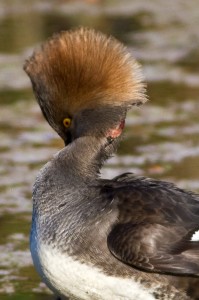
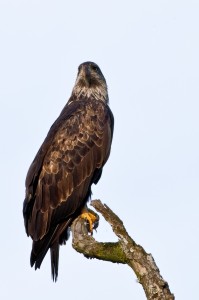
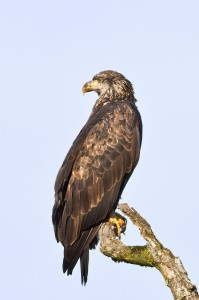
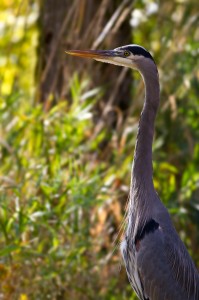
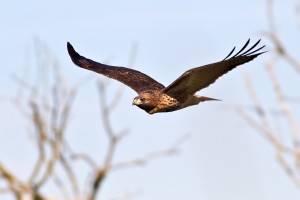
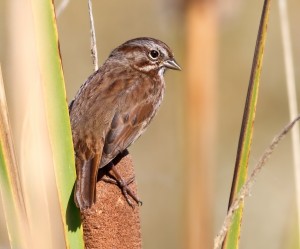
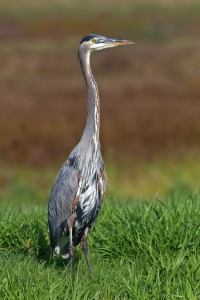
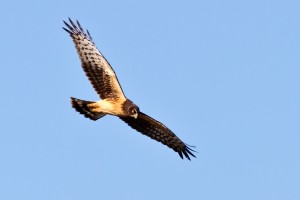
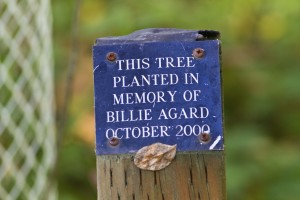


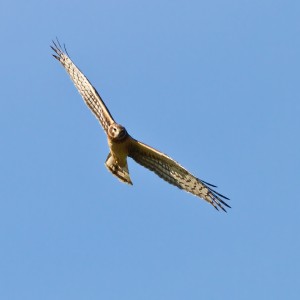
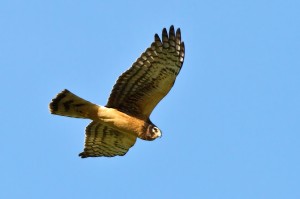


Great entry this week, Papa. It’s very touching that this week’s shoot was dedicated to Granny. She’d have been very pleased. She loved you so much! 🙂
Another great set of shots for sure. Great LBJ shots and eagle ones as well! The injured merganser definitely casts some darkness over this otherwise pleasant day. Poor little thing. Happy, though, that you finished off your post with some fantastic shots of those harriers so that helped lift the spirits a little by the end of the read! I am in awe of the wingtip-to-wingtip shot especially. Great capture.
BTW, all of your BIF shots are really looking good! I take it you’ve found the right camera settings for you? Loved the comment about taking cover when the geese fly over too…made me laugh ’cause it’s SO true! LOL. Love you!
Kimi, thanks for reading the blog this week already! Except for those spider webs/yellow jackets, there wasn’t much to complain about on this beautiful sunny day (except maybe the injured merganser). Much better than dealing with mosquitoes–of which there were a few but not enough to worry about. Yeah, I hope that little merganser is ok! Thanks for the comments on the BIF’s! I think I’m getting used to the lack of image stabilization on the 400, and the feel of the 7D. I’ve been using a zone AF setting that at least increases my chance of focusing. I think I’m beginning to get used to the new equipment and settle in a little bit. Love you Kimi!
Scott, great images and a nice narration. It looks like you’ve gone whole hog with some gear too. Wow. Maybe once our OPM retirements are finalized and we find some extra euros, I could upgrade from the Canon 20D. I’d be interested in your impressions with those two you have now. Do you use the converter much with the 400? Probably to get those tight shots. Take care mi amico.
Hi Doug! It’s really nice you stopped by to check out the site. Thanks for the kind words! The 20D was a pretty good workhorse in its prime and still probably is for a lot of folks. The 40D has always worked well for me. You read a lot of horror stories about problems with it but I never experienced that–luckily. I think you’d like the improved burst rate of 6.5 fps and the larger lcd screen, just to name a couple of things. On the 7D, it’s really a souped up 40D. I like the 19 AF points and the many AF styles you can choose from. I didn’t think I’d care about the video function but I actually am having some fun with that. The 8 fps burst rate is real handy and it’s just built a little better than the 40D. The extra pixels gives me a little more freedom to crop. I have used the converter with the 400 and if you can get the focus right, you can get some nice images. It’s manual focus for the crop bodies. I have had some luck using the live view function and then zooming in to 10x and focusing the image on the lcd screen–but the camera has to be PERFECTLY still at this zoom level. I don’t have a lot of luck focusing manually thru the viewfinder–maybe I should try a different focusing screen. Take care Doug!
Great shots! I was there for a couple hours in the late afternoon that day too. It was a beautiful day with hawks everywhere! The egret in the grass was the highlight of what I saw that day. You got some more great early morning shots of some sparrows and those harrier shots were awesome! I did not see the merganser but saw a Brown Pelican last Spring with a similar neck injury (http://www.flickr.com/photos/namra38/4468154978/). I’m thinking it was caught on a net or hook, but I agree with the hunting comment. I’m not against hunters, however, not quite sure why they are allowed to hunt at a refuge for wildlife where we aren’t even allowed to get out of our cars but shots are fired all the time.
I’ve always wondered that too, how they require a quiet photographer/birder to stay in their rig while just a couple hundred feet away these folks with guns are wading through the marshes with their dogs. It makes little sense. The pelican injury does look similar to the merganser injury all right. Nice shot Arman! Thanks for your kind comments and for taking the time to visit!
I came across the same Merganser today, the neck actually looks like it is healing, maybe she will make it.
That’s good news Arman. Kimi was also at the refuge today and I will ask her if she saw the merganser. She did mention it was kind of dark in the afternoon with some showers. Not the best shooting weather.
So sad about the Merganser. I do hope the injury heals and she makes a full recovery.
Don’t get me started about hunters/hunting. I am NOT a fan of hunting and am not bashful about saying so.
I am appalled that they allow hunting at the refuge[s]. When I first asked someone about this …they sad that if not for the hunter’s money ….the refuge wouldn’t exist. I don’t accept this explanation. And I hate being at Ridgefield NWR on the days / months that the hunters are there. It just seems so ass backwards that they call it a “refuge” for wildlife….but the wildlife are being shot at/ killed. And yet, photographers/ birder’s are required [ rightfully] to remain in their vehicles so as not to stress the migrating birds. HA.
Beautiful images and text here at your blog. You really had a good day at the refuge . What a joy to come here and see what you saw and captured w/your camera aside from viewing on Flickr.
Rebecca
Rebecca, I hear what you are saying and agree. The little merganser may be on the mend according to Arman (see his comment above). We can hope so! I plan on going out there tomorrow and will look for her. Thank you for reading/visiting the site and for your kind comments.